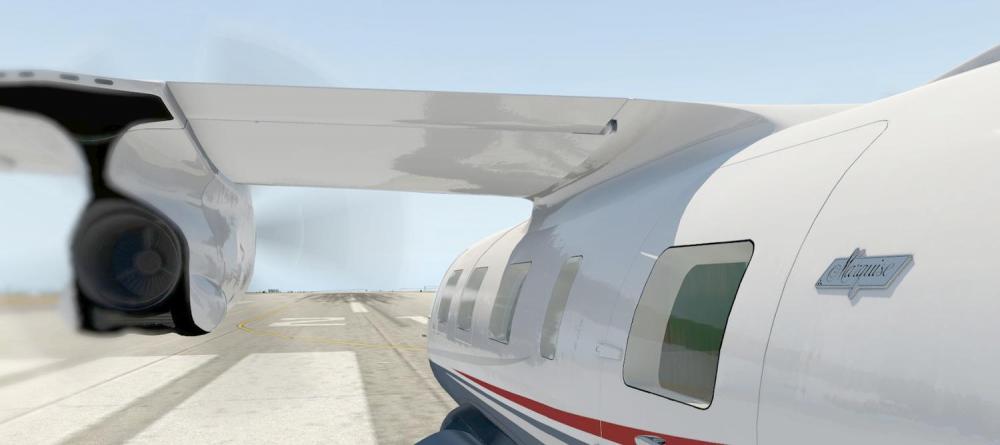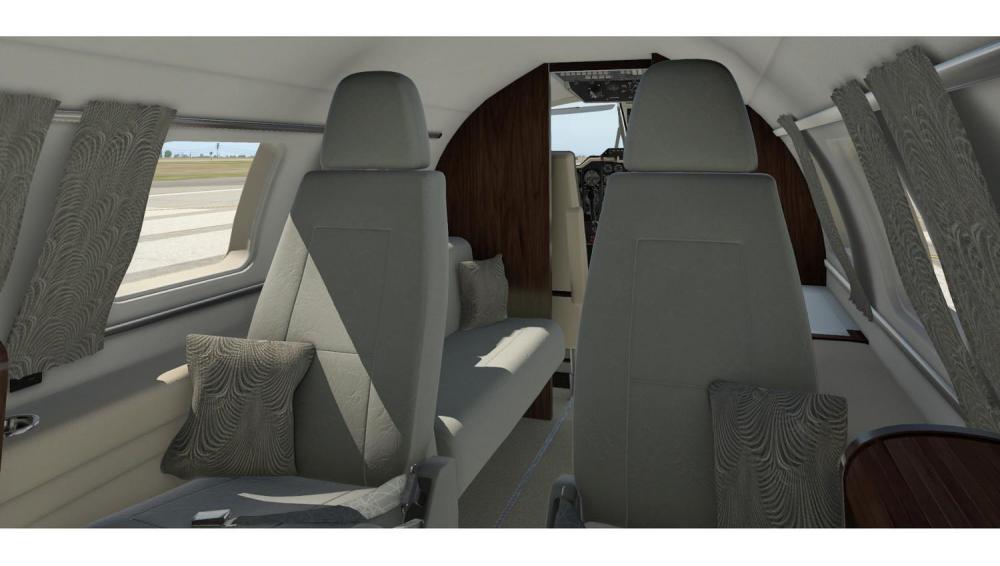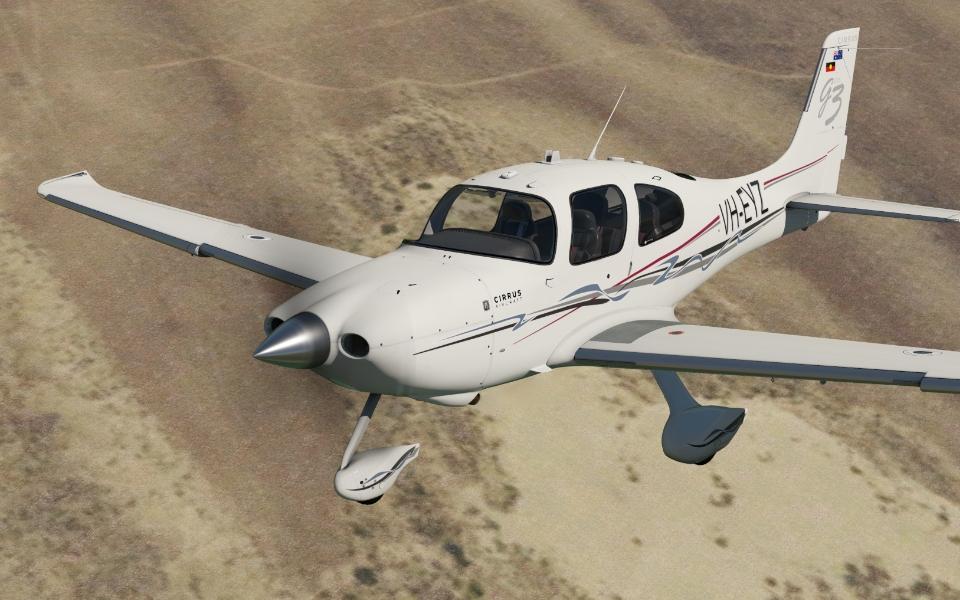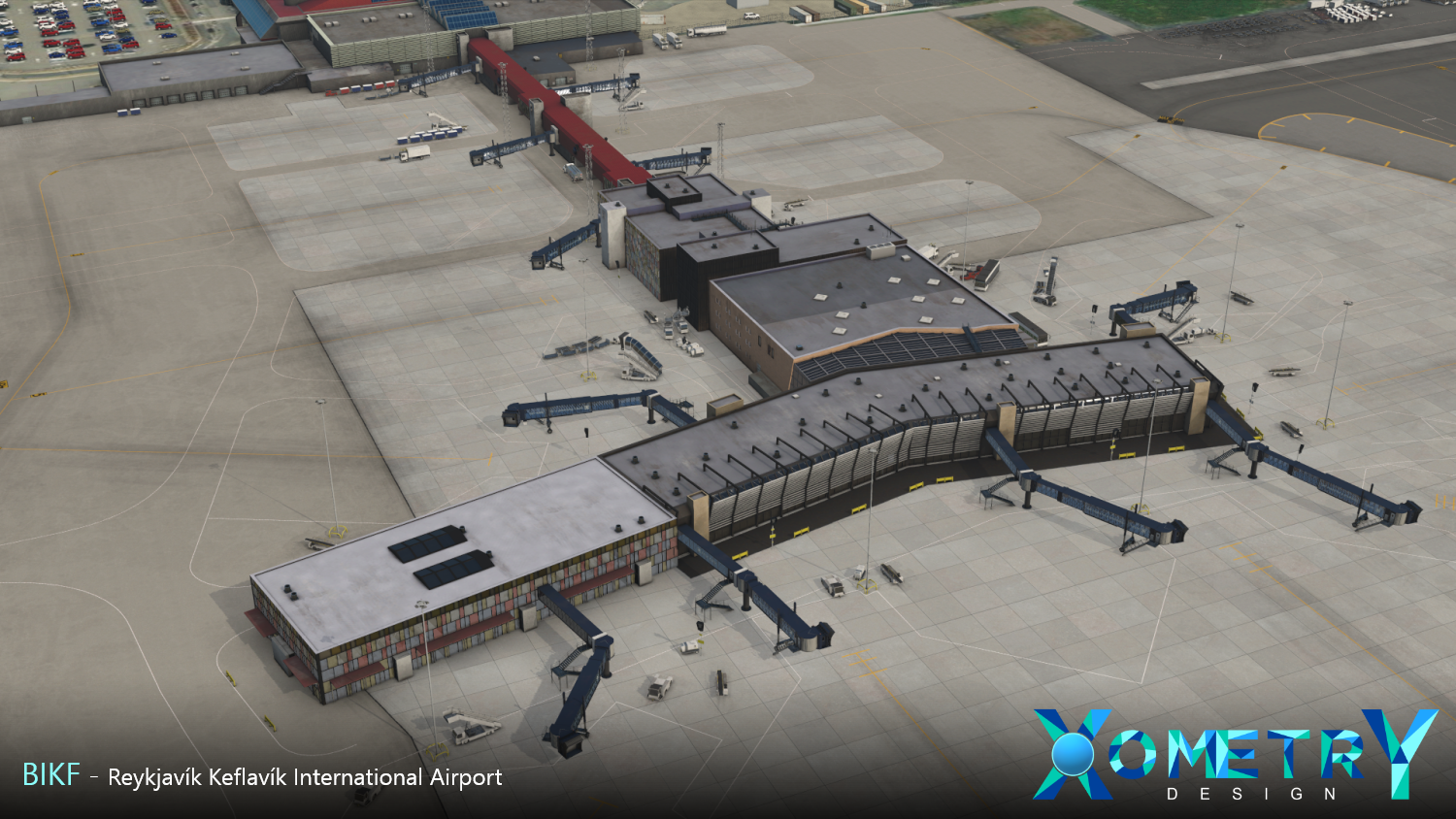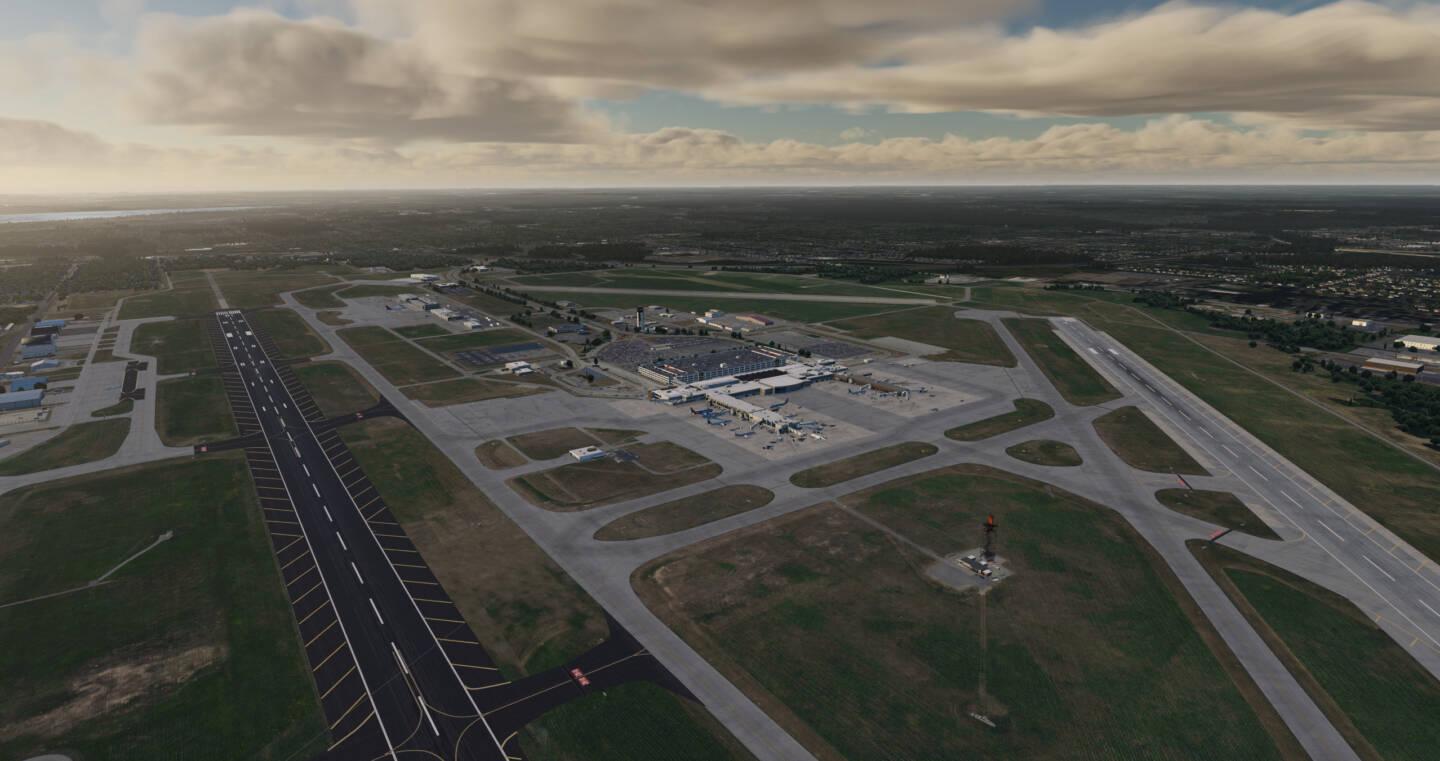
Cameron
X-Aviation-
Posts
10,011 -
Joined
-
Days Won
462
Content Type
Profiles
Forums
Latest X-Plane & Community News
Events
Downloads
Store
Everything posted by Cameron
-
Hi Keith, You have the 737 installed here for some reason: Aircraft/Extra Aircraft/X-Aviation It must be in Aircraft/X-Aviation, not 'Extra Aircraft'.
-
X-Scenery and X-Aviation have officially announced the Mitsubishi MU-2B-60 v2.0 project. The announcement comes in the form of a progress update to get a feel for how the aircraft is taking shape. The project itself is quite far along, so expect pretty regular updates from now forward! You can see the announcement here in our forums.
-
Officially Announcing Mitsubishi MU-2B-60 Marquise 2.0!
Cameron posted a topic in Mitsubishi MU-2 v2
Captains, It's with a lot of excitement that I get to announce this product officially now! Back in 2008 we started X-Aviation with the MU-2 as our first product for sale, and now we're re-inventing it with this beautiful new version. Many people in the X-Plane community found the original v1 we sold as one of their very first payware aircraft back in the day. Today will be the first of a series of progress updates leading up to the forthcoming release of the Mitsubishi MU-2B-60 Marquise 2.0 simulation for X-Plane. Since its beginnings in 2005, the MU2 has been a labor of love by @tkyler and has been nursed for 13 years and for the upcoming 2.0 release, has incorporated the latest X-Plane features. The MU2 is poised to last for many more years to come and certainly through future versions of X-Plane. We are also pleased to announce all previous owners of v1 will be receiving an upgrade discount to v2! The MU-2 is a perfect GA airplane to have in your hangar and get you around X-Plane quickly when you need to feed your flight simulation addiction and actually cover some ground but don't feel like flying tube-liners. With its distinctive profile, engine sound and a cruise speed of 270+ knots, it can cover a lot of X-Plane scenery in a simulator session and have you off the computer before dinner time. In this first report, we'll discuss the most obvious improvement in version 2.0, the visual 3D model and textures. When looking at the MU2 Version 1.0 series 3D, it it quite apparent that there was major room for improvement (mind you this was X-Plane 9 days). As it turned out, trying to remodel the existing 3D was not a viable option and the 2.0 version had to be completely redone from scratch. There are a few noteworthy factors that have enabled the improvements to the 3D detail. Major advancements in Blender 3D, the modeling tool used as well as advancements to the exporter by Laminar, have facilitated a painless workflow between Blender and X-Plane, allowing focus on the geometric detail. In addition, the capability of today's graphic cards to handle fantastic numbers of polygons and high-resolution texture sets have really taken the visual aspect of flight-simming to a level barely imaginable a decade ago. The first order of business was to increase the geometric fidelity of the model and get the challenging shapes and curves more accurate. It is a difficult aircraft to get to look right. Increased geometric fidelity results in much sharper and crisper detail at close camera angles and generally a more natural look all-around. The two images below shows the Version 1.0 3D model against the Version 2.0 3D model. Version 1.x Wireframe Version 2.0 Wireframe If you study the two images above, you will see version 2.0 has a higher density 3D model all around; however, note the darker areas of the 3D wireframe mesh. These are areas where higher 3D detail has been applied in order to achieve sharper visual results that reflect light more realistically as you move the camera around. The traditional way such details are added is through the use of higher resolution texture "decals", much like the decals on plastic models. While decals are a great technique and absolutely useful, they do lack the accuracy of subtle light interaction around geometric edges at closer camera angles. Lighting details on 3D edges have always been one of those areas that make the difference between a fake looking 3D model and one that comes alive. The image below shows a few areas where the 3D detail makes a difference to the lighting. Though higher detail is applied where it counts, it wasn't added where not needed, yielding an efficient 3D model that is very performant in X-Plane. With the 3D detail in place, you have to bring it alive with texturing. X-Plane's PBR (Physically Based Rendering) has always yielded a wonderfully crisp and beautiful color palette when taken to its limits, and X-Plane 12 looks to improve that even more when it arrives. One critical component of believable texturing is a solid implementation of what is known as 'ambient occlusion', or AO as 3D artists like to say. AO is a phenomenon where light loses energy as it bounces around into corners, resulting in darker corners and recesses. Below is a comparison of a 3D model with and without ambient occlusion. The results are quite stark! AO in real time for lots of 3D polygons is still quite performance heavy. X-Plane actually has a small bit of real time AO between the ground and airplane when in HDR mode. You may note the subtle darkening of the ground around the landing gear tires sometime as aircraft taxi; however, X-plane provides no AO effects for aircraft. We obtain this AO effect by "painting" the shadowing into our textures. This is a process known as "baking" in the 3D community and our 3D software tools actually do most of the painting work for us. By baking AO effects into our textures, we can achieve a much more realistic lighting look throughout the 3D model. Baking AO lighting though is a bit of an art and can be a bit time consuming but when done well, the results are quite immersive! AO really shines when applied to interior spaces, giving lots of visual depth and avoiding that flat, cartoony look. When all of the 3D elements come together: the geometric 3D detail, attentive ambient occlusion effects, PBR texturing and X-Plane's great PBR engine, the results are exactly what we've been waiting for 13 years! A SPECIAL NOTE is warranted about this last screenshot. We include it because it shows the 3D detail and texturing in the cockpit at its best! However, the G500/600 GLASS display shown will NOT be included with the MU2 purchase. It is a separate product available by Real Sim Gear through X-Aviation, but for those folks who wish to have some glass in their MU-2, then you'll be happy to know that we support it fully and it will be available straightaway when the MU2 is release for owners of the Real Sim Gear G500! In our next progress update, we'll talk about the cockpit variants, controls and animations and how they play a major role in our immersion! Until next report, Blue Skies and tailwinds!- 60 replies
-
- 25
-

-

-
The doors are not functional.
-
After today's SR22 Entegra update, no buttons or knobs work.
Cameron replied to BillOtten's topic in Entegra SR22 Series
Sounds like this: https://support.torquesim.com/hc/en-us/articles/360057635513-Steps-to-resolve-plugins-not-loading-Error-Code-126- -
Don't know. Haven't tested it. Not really often I come across people with it in their Log files either.
-
Take Command: SR22 G1000 Series v1.3.0 Update Released!
Cameron replied to Cameron's topic in G1000 SR22 Series
I assumed you did this. My statement STILL stands. -
Take Command: SR22 G1000 Series v1.3.0 Update Released!
Cameron replied to Cameron's topic in G1000 SR22 Series
You should NOT do this. It does interfere with the installer side from update to update, whether you realize it or not. -
Take Command: SR22 G1000 Series v1.3.0 Update Released!
Cameron replied to Cameron's topic in G1000 SR22 Series
Aircraft/X-Aviation/SR22 Series_G1000/TorqueSim SR22/SR22.acf This file path is very strange to me. We do not install our product into a SR22 Series_G1000 folder. Did you manually re-name this recently? Is it possible you're trying to run an old SR22? The folder should simply be SR22 Series. -
TorqueSim has released updates covering all four versions of their SR2X series of products (Entegra and G1000). These updates consist of a wide variety of improvements, with initial preparations for X-Plane 12. (This isn’t the X-Plane 12 update, but this is a step towards it. Once X-Plane 12 is released, TorqueSim will release updates in due course to fully support the new sim at no additional charge to existing customers. You can read all about the updates on the TorqueSim blog.
-
This will serve as a formal forum announcement that we have released the version 1.3.0 update for the SR20 G1000. All customers who have purchased the SR20 G1000 up till now have been sent an e-mail by X-Aviation with complete instructions on how to obtain your update. We have made this a very simple process! For those that purchase the SR20 G1000 from today forward, your purchased download will already be updated to version 1.3.0 for you. What if I didn't get the update e-mail? If you did not receive your update e-mail don't fret! X-Aviation has updated our system to allow all customers to update with ease, regardless of whether you received an e-mail for the update! Here's what to do: 1. Login to your X-Aviation account here: https://www.x-aviation.com/catalog/account_history.php 2. Find your original SR20 G1000 download and re-download the file. It will download as the latest version! The following is a list of additions/fixes included: New Features: Major infrastructure refactoring in preparation for X-Plane 12, bringing over our modern fundamental function library, activation system, and anonymized statistics platform from our in-development aircraft. These systems should increase the aircraft functions' stability and provide a better basis going into X-Plane 12 for a more unified experience across our fleet. Improved FMOD sounds throughout with surround sound support and fixed audio compression. Reworked sound space, sound positioning, and refined engine and prop sounds. Visual model overhaul, improving fuselage mesh and interior textures. No more ripples or pinches in the composite exterior. Added 3D stitching on the glare shield. Performance tuning and general improvements Bug Fixes and Improvements: [T-1203] Exterior lights should now work with "hide_3d_details" setting [T-1602] Tabs fuel option on SR20 should fill properly [T-1611] Persist setting option in the menu was previously finicky [T-1431] SR22 NA adjust fuselage drag coefficients [T-1542] Adjust MD302 power handling with RSG Cirrus Cockpit hardware [T-1630] Wobbly propeller disc texture [T-1631] Magnetic compass texture orientation [T-1259] Improved engine model handling [T-1639] Fixed hidden visor in exterior view [T-1643] Fix GCU frequency ENT key on engine page for frequency entry As always, thanks for being a customer with X-Aviation. We appreciate your feedback and support! Enjoy these latest updates, and stay tuned to the forum as we continually announce the latest happenings.
-
This will serve as a formal forum announcement that we have released the version 1.3.0 update for the SR22 G1000 Series. All customers who have purchased the SR22 G1000 Series up till now have been sent an e-mail by X-Aviation with complete instructions on how to obtain your update. We have made this a very simple process! For those that purchase the SR22 G1000 Series from today forward, your purchased download will already be updated to version 1.3.0 for you. What if I didn't get the update e-mail? If you did not receive your update e-mail don't fret! X-Aviation has updated our system to allow all customers to update with ease, regardless of whether you received an e-mail for the update! Here's what to do: 1. Login to your X-Aviation account here: https://www.x-aviation.com/catalog/account_history.php 2. Find your original SR22 G1000 Series download and re-download the file. It will download as the latest version! The following is a list of additions/fixes included: New Features: Major infrastructure refactoring in preparation for X-Plane 12, bringing over our modern fundamental function library, activation system, and anonymized statistics platform from our in-development aircraft. These systems should increase the aircraft functions' stability and provide a better basis going into X-Plane 12 for a more unified experience across our fleet. Improved FMOD sounds throughout with surround sound support and fixed audio compression. Reworked sound space, sound positioning, and refined engine and prop sounds. Visual model overhaul, improving fuselage mesh and interior textures. No more ripples or pinches in the composite exterior. Added 3D stitching on the glare shield. Performance tuning and general improvements Bug Fixes and Improvements: [T-1203] Exterior lights should now work with "hide_3d_details" setting [T-1602] Tabs fuel option on SR20 should fill properly [T-1611] Persist setting option in the menu was previously finicky [T-1431] SR22 NA adjust fuselage drag coefficients [T-1542] Adjust MD302 power handling with RSG Cirrus Cockpit hardware [T-1630] Wobbly propeller disc texture [T-1631] Magnetic compass texture orientation [T-1259] Improved engine model handling [T-1639] Fixed hidden visor in exterior view [T-1643] Fix GCU frequency ENT key on engine page for frequency entry As always, thanks for being a customer with X-Aviation. We appreciate your feedback and support! Enjoy these latest updates, and stay tuned to the forum as we continually announce the latest happenings.
-
This will serve as a formal forum announcement that we have released the version 1.1.0 update for the SR20 Entegra. All customers who have purchased the SR20 Entegra up till now have been sent an e-mail by X-Aviation with complete instructions on how to obtain your update. We have made this a very simple process! For those that purchase the SR20 Entegra from today forward, your purchased download will already be updated to version 1.1.0 for you. What if I didn't get the update e-mail? If you did not receive your update e-mail don't fret! X-Aviation has updated our system to allow all customers to update with ease, regardless of whether you received an e-mail for the update! Here's what to do: 1. Login to your X-Aviation account here: https://www.x-aviation.com/catalog/account_history.php 2. Find your original SR20 Entegra download and re-download the file. It will download as the latest version! The following is a list of additions/fixes included: New Features: Major infrastructure refactoring in preparation for X-Plane 12, bringing over our modern fundamental function library, activation system, and anonymized statistics platform from our in-development aircraft. These systems should increase the aircraft functions' stability and provide a better basis going into X-Plane 12 for a more unified experience across our fleet. Improved FMOD sounds throughout with surround sound support and fixed audio compression. Reworked sound space, sound positioning, and refined engine and prop sounds. Visual model overhaul, improving fuselage mesh and interior textures. No more ripples or pinches in the composite exterior. Add Annunciator Panel popup window Improve performance of Entegra system Improve engine handling [T-1609] Support for simultaneous DFC90 button press functionality for RealSimGear DFC90 hardware Commercial Edition: Customizable failures for aircraft and avionics Bug Fixes & Improvements: [T-1578] Add PFD Knob labels [T-1571] Fix Entegra PFD knob push action [T-1604] Fix engine parameter rounding errors [T-1575] Improve automatic popup handling [T-1637] Add in-sim popup control for windows [T-1631] Fix magnetic compass orientation [T-1638] Adjusted Linux dependencies [T-1513] Commercial Edition: Improved oil pump failure, Added configurable Magneto failures [T-1639] Fixed hidden visor in exterior view [T-1630] Fix propeller disc wobbly texture [T-1629] Fix bungled Linux OpenGPWS versions [T-1641] Fix DFC90 popup window label brightness As always, thanks for being a customer with X-Aviation. We appreciate your feedback and support! Enjoy these latest updates, and stay tuned to the forum as we continually announce the latest happenings.
-
This will serve as a formal forum announcement that we have released the version 1.1.0 update for the SR22 Entegra Series. All customers who have purchased the SR22 Entegra Series up till now have been sent an e-mail by X-Aviation with complete instructions on how to obtain your update. We have made this a very simple process! For those that purchase the SR22 Entegra Series from today forward, your purchased download will already be updated to version 1.1.0 for you. What if I didn't get the update e-mail? If you did not receive your update e-mail don't fret! X-Aviation has updated our system to allow all customers to update with ease, regardless of whether you received an e-mail for the update! Here's what to do: 1. Login to your X-Aviation account here: https://www.x-aviation.com/catalog/account_history.php 2. Find your original SR22 Entegra Series download and re-download the file. It will download as the latest version! The following is a list of additions/fixes included: New Features: Major infrastructure refactoring in preparation for X-Plane 12, bringing over our modern fundamental function library, activation system, and anonymized statistics platform from our in-development aircraft. These systems should increase the aircraft functions' stability and provide a better basis going into X-Plane 12 for a more unified experience across our fleet. Improved FMOD sounds throughout with surround sound support and fixed audio compression. Reworked sound space, sound positioning, and refined engine and prop sounds. Visual model overhaul, improving fuselage mesh and interior textures. No more ripples or pinches in the composite exterior. Add Annunciator Panel popup window Improve performance of Entegra system Improve engine handling [T-1609] Support for simultaneous DFC90 button press functionality for RealSimGear DFC90 hardware Commercial Edition: Customizable failures for aircraft and avionics Bug Fixes & Improvements: [T-1578] Add PFD Knob labels [T-1571] Fix Entegra PFD knob push action [T-1604] Fix engine parameter rounding errors [T-1575] Improve automatic popup handling [T-1637] Add in-sim popup control for windows [T-1631] Fix magnetic compass orientation [T-1638] Adjusted Linux dependencies [T-1513] Commercial Edition: Improved oil pump failure, Added configurable Magneto failures [T-1639] Fixed hidden visor in exterior view [T-1630] Fix propeller disc wobbly texture [T-1629] Fix bungled Linux OpenGPWS versions [T-1641] Fix DFC90 popup window label brightness As always, thanks for being a customer with X-Aviation. We appreciate your feedback and support! Enjoy these latest updates, and stay tuned to the forum as we continually announce the latest happenings.
-
Xometry has announced their latest airport scenery, Keflavík International Airport. This is known as the main hub for Iceland commercial service. The listed features are: 2022 layout High-quality PBR textures on buildings 4K PBR ground textures ensure realistic asphalt and concrete colors across the airport High-quality color corrected Ortho imagery Custom SAM Jetways 3D interior in the main terminal Custom PBR ground clutter (edited) We'll keep you updated as more info comes out.
-
Yes. Automatic mode will load the most plausible textures for the location you're in. In Arizona's case, the most plausible textures for this location that TerraMaxx has would be summer.
-
Hi, We do not have any support ticket e-mail from you at all, so I'm not sure where you sent that to? That said, I see looking at your account here on the forums vs the account on X-Aviation, you have misspelled your e-mail on X-Aviation at the time you created your account. I have adjusted this spelling error for you.
-
This does not even meet the required minimum specs of the product. I would also say it could be contributing to nothing showing on the HUD if you can't see anything rendered when moving around. Either way, this hardware is not in any way suited for this product.
-
The numbers should not disagree by this big of a margin and we have this slated to be fixed in a future update.
-
VerticalSim has released their rendition of Syracuse Hancock International Airport. The scenery features include: 4K PBR texturing Circa 2022 airport layout SAM jetway support Animated vehicle traffic HDR night lighting Taxi routes for use with AI traffic addons The product may be purchased for $19.95 on the VerticalSim website.
-
Take Command!: Hot Start CL650 Update v1.4.1
Cameron commented on Cameron's X-Plane flight sim news in Aircraft
The aircraft is fully compatible with Monterey. Many of us use it. You should use the CL650 support forums if you have an issue. -
No idea. Whenever it's ready!



